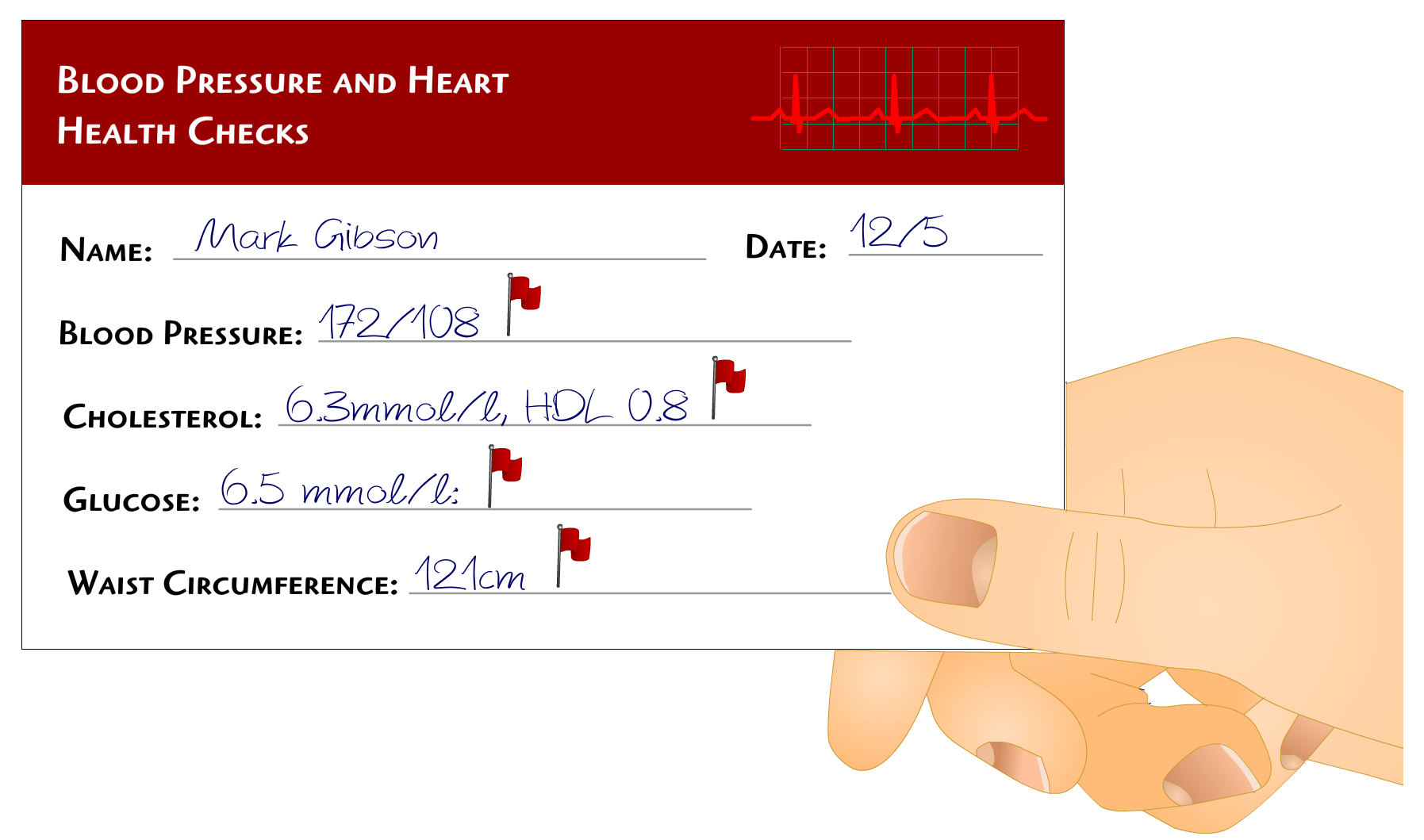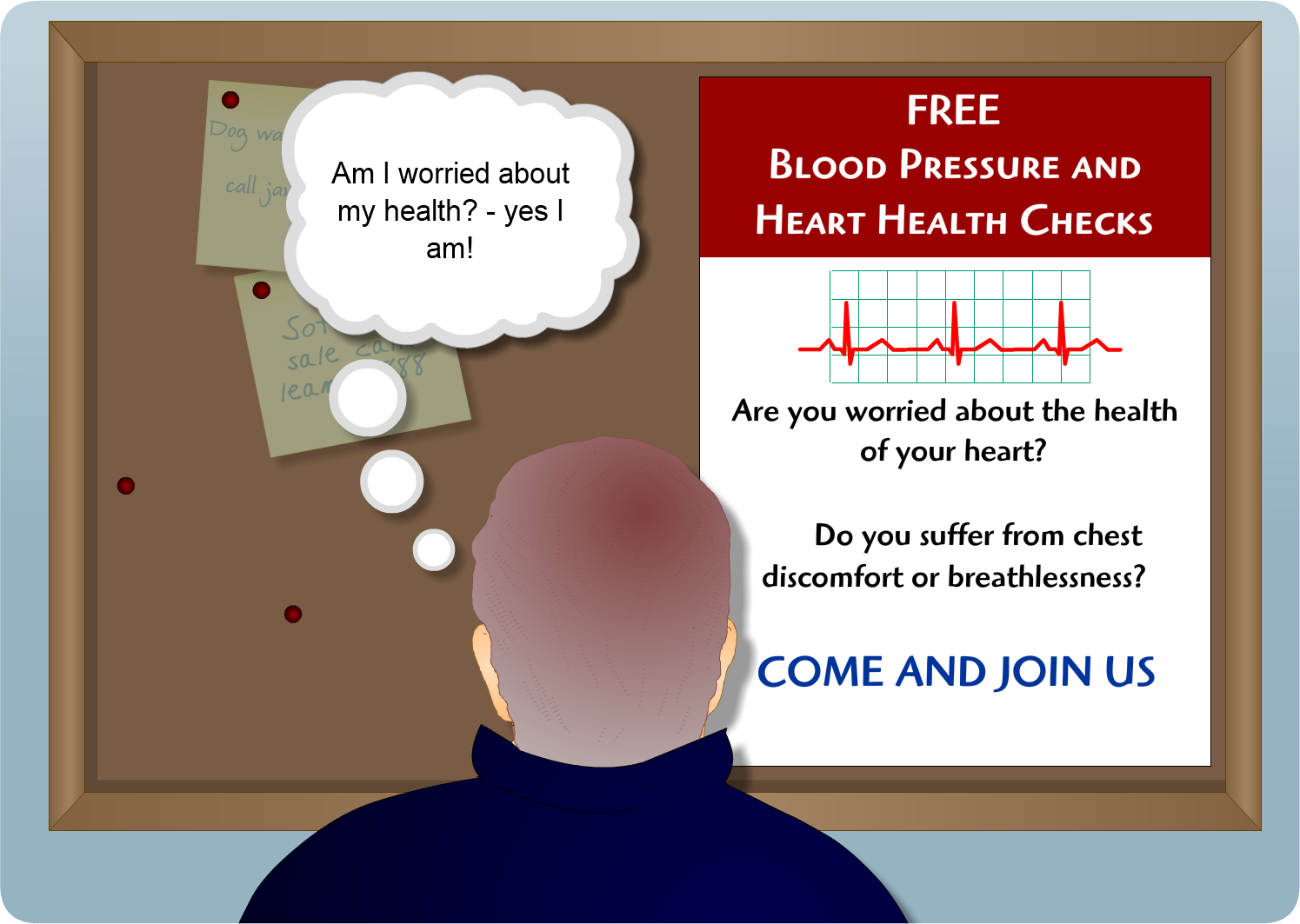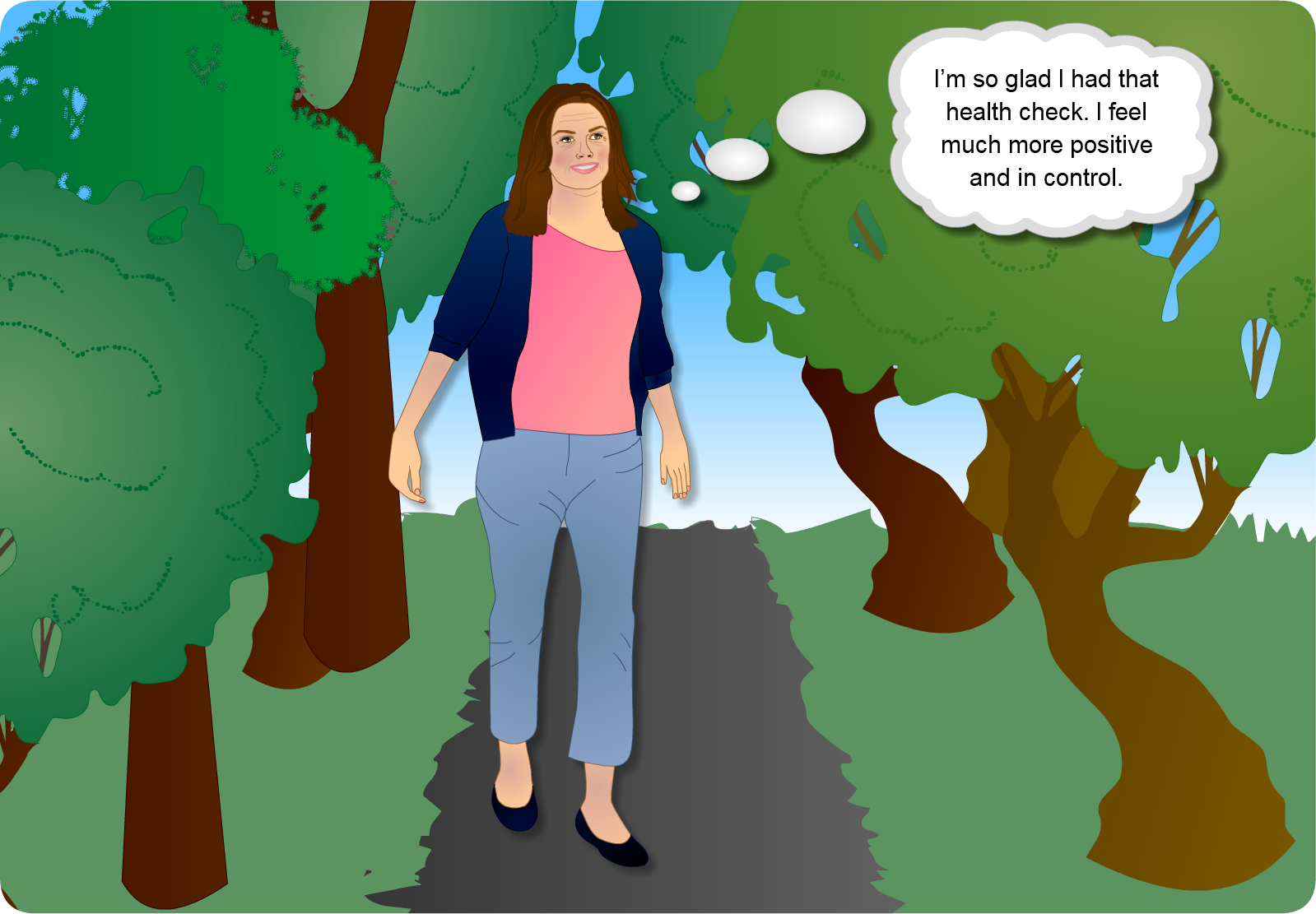Mark returns to the practice a few weeks later for a follow-up consultation with the practice nurse. Whilst waiting to see the nurse, he starts to worry about his diagnosis of hypertension.
Category: HEARTe
Medication management
BP check and future management pathway
Mark sees the practice nurse and she checks his BP again. She confirms his high reading and finds it to be 173/105.
If you need more information on Ambulatory Blood Pressure Monitoring (ABPM) and Home Blood Pressure Monitoring (HBPM), please review Moudle 1. Please see Additional information for the British and Irish Hypertension Society (BIHS) pathway.
First consultation at the practice
Mark’s referral
The nurse explains what is involved in the Cardiovascular Disease (CVD) health check. Mark admits that it is about ten years since he has been to the doctor for anything. He usually feels well but did get a fright when his brother had a heart attack recently. Mark is glad of the opportunity to have the check. Mark has his blood pressure checked and it is 172/108. His pulse rate is 72 beats per minute and the rhythm is regular. Given that his blood pressure is elevated, the nurse rechecks it twice more but measures similar high readings. A capillary sample of blood is taken to test for total cholesterol, HDL cholesterol and a random blood glucose, using validated point of care equipment. His total cholesterol is 6.3mmol/L, HDL 0.8mmol/L and glucose 6.5mmol/L. The nurse measures Mark’s waist circumference as 121cm. Mark tells the nurse he has never smoked and drinks alcohol on special occasions. The nurse explains that he is going to calculate his risk of developing CVD in the next 10 years. He calculates this as 34%.

Look at Mark’s results above and work out the results for yourself. Remember he is 54, his postcode is QQ1 1QQ and he has a family history of CVD. Calculate Mark’s ASSIGN score.
Like many other assessment tools, ASSIGN has limitations. It does not address physical activity, diet, alcohol or mental health issues
Additional information
- Age: 54
- Height: 1.77 m
- Weight: 120kg
- Waist circumference: 121cm
- Glucose: 6.5 mmol/l:
- Takes minimal exercise
- Drinks: on special occasions
- Eats: fast food regularly
Key
- At risk
- Increasing risk
- Low risk
Consultation feedback
Supermarket screening session

Mark sees an opportunistic screening session advertised in the supermarket and in local press. The session will check BP, pulse, cholesterol and glucose, and give appropriate health and lifestyle advice. He decides to give it a go.
Mark
Mark, age 54 years, is a bachelor. His older brother, age 56 years, had a myocardial infarction a few weeks ago and Mark is concerned that there may be a family link. Mark works part time as a taxi driver and, as he is dropping a customer off at the supermarket, notices a sandwich board advertising free health checks. He decides to park his taxi and go and have a health check. Being a taxi driver, his job is sedentary and he blames this for being a bit overweight. He takes advantage of work when it is available and, as a result he takes little exercise and eats lots of fast food. Until now he has felt he was fairly healthy and he has no specific previous medical history. His postcode is QQ1 1QQ
Key messages
By the end of this case you should understand the following:
- Everyone over the age of 40 should have a cardiovascular risk assessment.
- Clinical management is not always required.
- Health professionals should encourage lifestyle modification at every opportunity.
- Addressing mental health and poor social circumstances can have a beneficial effect on cardiovascular risk.
3 months later: maintaining primary prevention
Because Anne has modified her lifestyle, she is reducing her cardiovascular risk and should be reviewed within 5 years.



